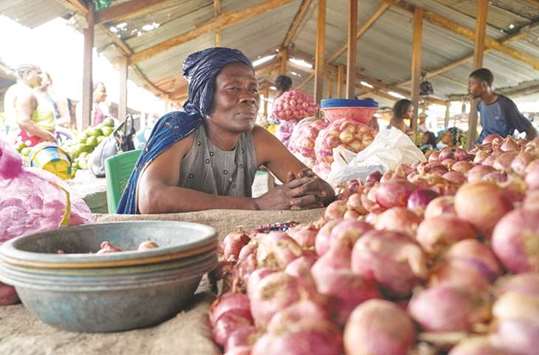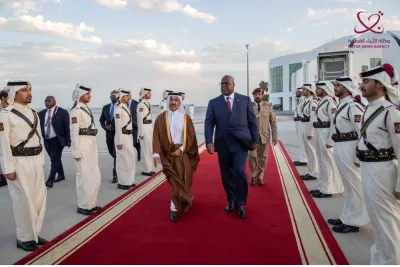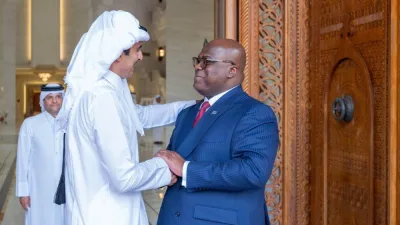After 16 years at the helm, Kabila was supposed to hold elections and leave office last year when his second and – under the constitution – final term expired. Instead, he stayed put.
On December 31, with the country on a knife-edge, an agreement was struck between the government and an opposition coalition known as the Rassemblement. It said elections would be held by the end of 2017 and that Kabila would not stand for a third term.
But with three months until the accord expires, a date for elections is yet to be set and Kabila remains in power, hunkered down in his presidential mansion above the Congo River, as the country – wracked by civil wars in the 90s and early 2000s – crumbles around him.
“The Congolese are living like animals in our own country,” said 34-year-old motorbike taxi driver Freddy Mulume, during a recent general strike called by opposition parties. “We are suffering so much.”
At the heart of Kabila’s current strategy to stay in power is control over the Independent National Electoral Commission, or CENI, the body tasked with organising elections that experts say is independent in name alone.
“CENI is considered a big player in driving delays and executing Kabila’s strategy,” said Stephanie Wolters, Congo analyst at the Institute for Security Studies.
In his office in Kinshasa’s gilded district of Gombe, CENI spokesman Jean-Pierre Kalamba disagreed. “CENI is the independent national electoral commission according to the Congolese constitution,” he said. “Those that doubt it, we put down to ignorance.”
But to date the commission has failed to publish an electoral calendar and faces a truly daunting workload, which several Kinshasa-based election experts and observers – all of whom requested anonymity – told IRIN could keep Kabila in power for years to come.
First, CENI must complete the electoral register. While most voters have now been enrolled, registration has only just begun in the conflict-torn provinces of Kasai and Kasai-Central. Kalamba said this is likely to finish in January, already taking Kabila beyond the December 31 deadline and sending Congo back into the political unknown.
A plan for how to organise the registration of Congolese voters living abroad is also yet to be decided, despite biometric kits for the diaspora being ready for months. “The kits are just sitting there in boxes,” said one expert. “For CENI, it is an extra way of buying time.”
After the registration process is complete, data must be brought to Kinshasa for analysis. This will involve removing cases where citizens have enrolled on more than one occasion and could take several months, depending on the resources CENI dedicates and the capacity of its servers.
This “should have started at the very beginning of the registration process,” said Cyril Kulenovic, election expert at the Organisation internationale de la Francophonie (OIF), but CENI is yet to procure the software required.
CENI also needs to change Congolese electoral law, including provisions on the organisation and financing of the elections, the allocation of seats, and a new threshold for parliamentary representation. Some of these provisions could prove controversial and take time to pass in the national assembly.
“They are looking to change a lot,” said Kulenovic. “It needs to be reviewed by the national assembly as soon as possible.”
Next CENI will need to print ballots. This could be done in Congo or tendered to a foreign company. The latter could take months, depending on how quickly the procurement process is managed, and will be complicated by the fact that three elections – presidential, national legislative, and local – are being held simultaneously: something never attempted before in Congo.
To get around the cost of printing so much paper, CENI has proposed the introduction of a semi-electronic voting system. Kalamba described this as a “simple” option.
But election experts told IRIN electronic voting will present CENI with a logistical and budgetary nightmare, with voter machines and power supplies required for more than 100,000 polling stations across a country the size of western Europe.
“They are having problems managing the generators for roughly 17,000 registration centres, let alone polling stations,” said one source. “It is so much material to deploy.”
Voter machines would also require significant training for CENI staff and could pose serious technical issues given Congo’s high humidity levels and electricity challenges. “By the time it is introduced, tested, and deployed, Kabila could have had more than his three mandates,” said one election expert. “It could take him to 2020 and beyond.”
With the voter register valid for just five years under existing Congolese law, by that time, a whole new generation of young adults might need enrolling, allowing CENI to go right back to square one, added another expert.
The two experts agreed there was absolutely no limit to how long it could all take. “This is an art, and CENI is mastering it,” one of them added.
The credibility of the registration process has also been called into question by opposition politicians and election observers, who claim irregularities in CENI’s initial data.
“In some provinces, enrolment numbers are extremely high, in others extremely low,” said a source who receives regular data updates from CENI. “It is alarming.”
At the centre of the controversy is Sankuru, one of five provinces that make up the conflict-torn Kasai region and a stronghold of government information minister and spokesperson Lambert Mende and the minister of foreign affairs, Leonard She Okitundu.
According to internal CENI data seen by IRIN, the number of registered voters in Sankuru was over twomn, 226% above its estimate of 886,386. That represents 92% of the total population based on population figures from a 2015 report from the Congolese Institute for National Statistics, also seen by IRIN.
“It is simply unbelievable,” said Martin Fayulu, an opposition politician and leader of the Commitment for Citizenship and Development party.
Kalamba offered numerous explanations to IRIN, emphasising population movements triggered by the conflict in Kasai. “Sankuru Province was a part of Kasai that rebels did not manage to reach,” he said. “Many people who ran away from the war went there.”
But publically available figures from the UN’s emergency aid co-ordination body, OCHA, show that just 21,000 IDPs were registered in Sankuru as of June 2017, far fewer than in neighbouring provinces.
As the crisis rumbles on, violence is on the rise across the country. In Kasai, a new conflict between the government and a militia called Kamuina Nsapu has displaced 1.4mn people and killed thousands.
In the east, a new coalition of armed groups called the National People’s Coalition for the Sovereignty of Congo (CNPSC) is building momentum in the province of South Kivu and has threatened to topple Kabila.
On top of the violence, low global commodity prices have triggered an economic crisis. Inflation is rising and the Congolese franc has lost 30% of its value, causing severe hardship for an already impoverished population.



